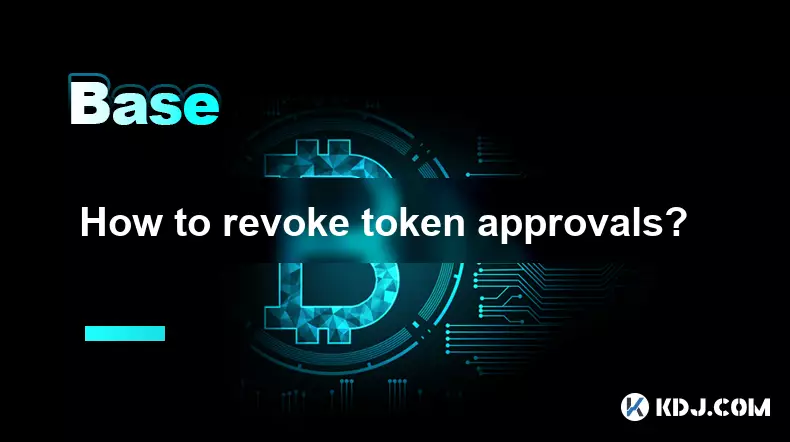-
 bitcoin
bitcoin $114050.498472 USD
2.69% -
 ethereum
ethereum $4371.902473 USD
1.67% -
 xrp
xrp $2.995548 USD
1.55% -
 tether
tether $1.000215 USD
0.04% -
 bnb
bnb $892.359281 USD
1.43% -
 solana
solana $224.837338 USD
4.00% -
 usd-coin
usd-coin $0.999716 USD
-0.03% -
 dogecoin
dogecoin $0.246520 USD
3.37% -
 tron
tron $0.341142 USD
1.74% -
 cardano
cardano $0.886598 USD
2.57% -
 hyperliquid
hyperliquid $55.973026 USD
5.62% -
 chainlink
chainlink $23.669165 USD
2.89% -
 ethena-usde
ethena-usde $1.000760 USD
-0.02% -
 sui
sui $3.612536 USD
3.80% -
 stellar
stellar $0.388361 USD
4.33%
How to run a crypto node?
Running a crypto node boosts privacy, security, and decentralization by letting you validate transactions independently on networks like Bitcoin or Ethereum.
Sep 11, 2025 at 08:54 pm

Understanding the Basics of Running a Crypto Node
1. A crypto node is a computer that participates in a blockchain network by validating and relaying transactions. It stores a full or partial copy of the blockchain ledger, ensuring the network remains decentralized and secure. Running a node allows individuals to independently verify transactions without relying on third parties.
2. Different blockchains have different node types. For example, Bitcoin supports full nodes and lightweight (SPV) nodes. Ethereum supports full nodes, archive nodes, and light nodes. Each type has specific hardware and bandwidth requirements depending on the level of data stored and processed.
3. Before setting up a node, research the specific blockchain’s documentation. Bitcoin Core, Geth, and Lighthouse are common software clients used to run nodes on Bitcoin and Ethereum networks. These clients are open-source and regularly updated to maintain network integrity.
4. Running your own node enhances privacy and strengthens the network's resilience against censorship and centralization. It enables you to interact directly with the blockchain, reducing dependency on centralized services like exchanges or block explorers.
5. Most node software requires a stable internet connection and sufficient storage. For Bitcoin, a full node currently needs over 500 GB of disk space, with the size growing as new blocks are added. Ethereum’s requirements vary, with archive nodes requiring several terabytes.
Step-by-Step Setup Process
1. Choose the blockchain you want to support—Bitcoin, Ethereum, Litecoin, or another decentralized network. Each has its own client software and setup procedures. For example, Bitcoin uses Bitcoin Core, while Ethereum supports multiple clients like Geth, Nethermind, or Besu.
2. Download the official client software from the project’s verified website. Avoid third-party sources to prevent malware or compromised binaries. Verify checksums or cryptographic signatures when available to ensure software authenticity.
3. Install the software on a dedicated machine or virtual private server (VPS). Configure settings such as data directory location, maximum connections, and bandwidth limits. Some users opt for Raspberry Pi devices or low-power hardware to minimize electricity costs.
4. Allow the node to synchronize with the blockchain. This initial sync can take hours or days depending on internet speed and hardware performance. During this phase, the node downloads and verifies every block since the genesis block.
5. Once synchronized, your node actively participates in transaction validation and block propagation, contributing to network decentralization and security. You can monitor its status through command-line tools or web-based dashboards, depending on the client.
Security and Maintenance Considerations
1. Secure your node with a firewall and disable unnecessary services. Exposing a node to the internet without protection can make it vulnerable to attacks. Use SSH keys instead of passwords if accessing remotely, and keep the operating system updated.
2. Regularly back up your wallet and configuration files. While the blockchain data can be re-downloaded, private keys and node settings are critical and irreplaceable if lost. Store backups in encrypted, offline locations.
3. Monitor disk space and network usage. Blockchain data grows continuously, and running out of space can halt synchronization or corrupt data. Set up alerts or automated scripts to notify you of low storage or high CPU usage.
4. Join community forums or Discord channels related to your node software to stay informed about updates, vulnerabilities, and best practices. Developers often release patches for bugs or consensus rule changes that must be applied promptly.
5. Consider enabling Tor or using a VPN to obscure your node’s IP address, enhancing privacy. Some networks allow peers to connect over Tor, reducing the risk of surveillance or targeted disruption.
Frequently Asked Questions
What are the electricity costs of running a crypto node?Electricity costs depend on hardware efficiency and local energy rates. A typical Raspberry Pi running a Bitcoin node consumes about 5–10 watts, costing less than $10 annually in most regions. High-performance servers or archive nodes may consume more but are still generally affordable for dedicated users.
Can I earn cryptocurrency by running a node?Most nodes do not directly earn rewards. Bitcoin full nodes do not receive BTC for participation. However, Ethereum validators who run nodes with 32 ETH staked can earn rewards through proof-of-stake. Simply relaying transactions or storing data does not generate income on most networks.
Is it safe to run a node on a home network?Yes, if proper security measures are in place. Use strong passwords, enable firewalls, and avoid exposing unnecessary ports. The primary risk is bandwidth usage and potential ISP throttling, not direct financial loss, as nodes do not store others’ private keys.
Do I need technical expertise to run a node?Basic technical skills are helpful but not mandatory. Many guides and pre-configured devices like Start9’s Embassy or Nodl offer user-friendly interfaces. Command-line knowledge improves troubleshooting ability, but graphical tools are increasingly available for beginners.
Disclaimer:info@kdj.com
The information provided is not trading advice. kdj.com does not assume any responsibility for any investments made based on the information provided in this article. Cryptocurrencies are highly volatile and it is highly recommended that you invest with caution after thorough research!
If you believe that the content used on this website infringes your copyright, please contact us immediately (info@kdj.com) and we will delete it promptly.
- MAGACOIN FINANCE: The Presale Pick Leading the 2025 Race
- 2025-09-12 00:25:13
- Etheria: Restart Heats Up with New Heroes and a Boss Battle!
- 2025-09-12 00:25:13
- Figure's IPO: A Blockchain Valuation Story
- 2025-09-12 00:30:01
- MiCA License, SportFi, and Blockchain: A New Era for Sports Engagement
- 2025-09-12 00:30:01
- Seoul's Crypto Embrace: Tax Breaks and a New Era for Firms
- 2025-09-12 00:30:01
- Rare UK 50p Coins: Unearthing Hidden Treasures in Your Pocket Change
- 2025-09-12 00:30:25
Related knowledge

What is the creator economy?
Sep 10,2025 at 02:54am
Understanding the Creator Economy in the Digital Age1. The creator economy refers to a digital ecosystem where individuals produce content, build audi...

What is social recovery for wallets?
Sep 09,2025 at 09:54am
Understanding Social Recovery in Cryptocurrency Wallets1. Social recovery is a security mechanism designed to help users regain access to their crypto...

What is DeFiLlama?
Sep 10,2025 at 09:18am
What Is DeFiLlama and Why It Matters in the Crypto Space1. DeFiLlama is a data analytics platform that focuses on decentralized finance (DeFi) protoco...

What is CoinGecko?
Sep 11,2025 at 06:18am
What is CoinGecko?CoinGecko is a cryptocurrency data aggregator that provides real-time information on digital asset prices, trading volumes, market c...

How is crypto regulated?
Sep 10,2025 at 04:18pm
Understanding the Framework of Crypto Regulation1. Governments and financial authorities around the world have taken varied approaches to regulating c...

How to revoke token approvals?
Sep 09,2025 at 12:18am
Understanding Token Approvals in the Crypto Ecosystem1. Token approvals are a foundational component of blockchain interactions, especially within dec...

What is the creator economy?
Sep 10,2025 at 02:54am
Understanding the Creator Economy in the Digital Age1. The creator economy refers to a digital ecosystem where individuals produce content, build audi...

What is social recovery for wallets?
Sep 09,2025 at 09:54am
Understanding Social Recovery in Cryptocurrency Wallets1. Social recovery is a security mechanism designed to help users regain access to their crypto...

What is DeFiLlama?
Sep 10,2025 at 09:18am
What Is DeFiLlama and Why It Matters in the Crypto Space1. DeFiLlama is a data analytics platform that focuses on decentralized finance (DeFi) protoco...

What is CoinGecko?
Sep 11,2025 at 06:18am
What is CoinGecko?CoinGecko is a cryptocurrency data aggregator that provides real-time information on digital asset prices, trading volumes, market c...

How is crypto regulated?
Sep 10,2025 at 04:18pm
Understanding the Framework of Crypto Regulation1. Governments and financial authorities around the world have taken varied approaches to regulating c...

How to revoke token approvals?
Sep 09,2025 at 12:18am
Understanding Token Approvals in the Crypto Ecosystem1. Token approvals are a foundational component of blockchain interactions, especially within dec...
See all articles









































































